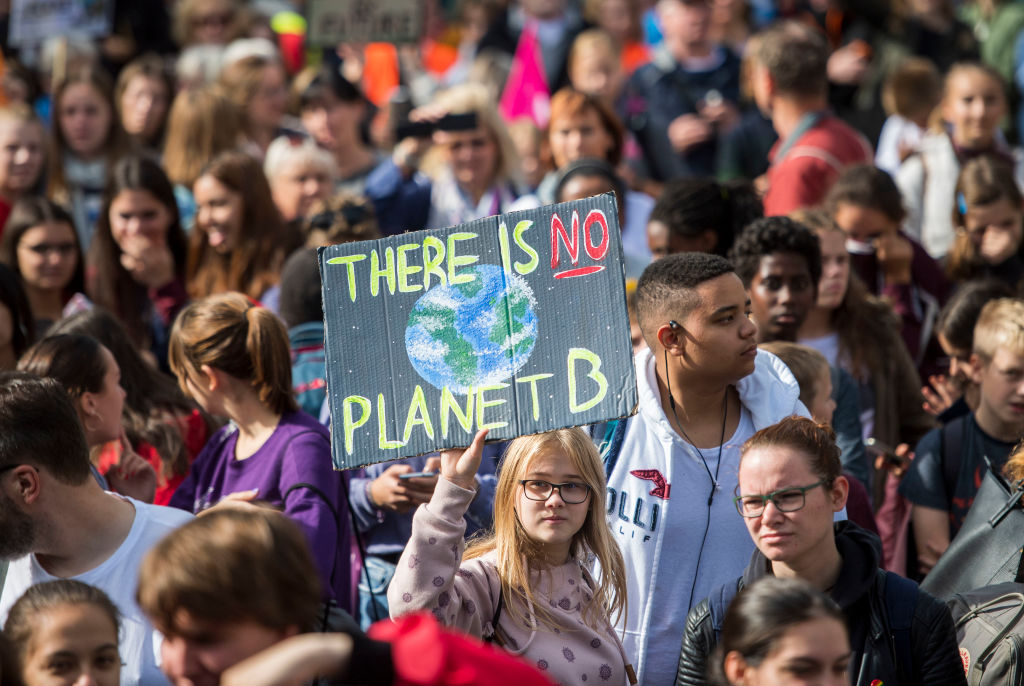One sign of moral panic is that when the facts change, the fears remain the same. In the 1970s, the Washington Post, TIME and Newsweek stoked fears of “a new ice age.” As soon as scientists updated their models to show a trend in the other direction, “global warming” became as threatening as global cooling. And when winters stubbornly kept happening and the direst predictions of new-age prophets like Al Gore failed to come to pass, the whole thing was rebranded as “climate change.”
Whatever the label, and whatever the underlying phenomenon was thought to be, the moral implication remained the same — human beings were ruining the earth and must curtail their comforts to save the planet. Bad weather used to be God’s punishment for human sinfulness. Now it’s nature’s punishment for capitalism. Men who foresee the future know this, and the only remedy is, of course, one that environmentalists, socialists and other anti-capitalists had already demanded before the crisis even was identified: larger government, more global government and increasing control over the economy and individuals’ lives.
“Planet panic” has a twin — population panic. The pattern is much the same. Throughout the twentieth century the political left and right both fretted about overpopulation. Now, as global population growth slows, and most wealthy countries exhibit birth rates below replacement levels, fears of overpopulation have given way to equally intense anxieties about a birth dearth.
And once again, despite today’s problem being exactly the opposite of what it was just a few years ago, the solution remains the same. For conservatives, the social crisis of “babies having babies,” as it was framed during an epoch of high rates of teen pregnancy, was a return to old-time religion and family values. Those are the same cures for an insufficient number of pregnancies today.
For progressives, too many pregnancies were a social ill to be addressed through planning: “family planning” as well as government planning — sex education, legalized abortion, birth control pills and other new modes of contraception, all promoted at home and abroad by social engineers using taxpayer dollars. In the twenty-first century, the same means are to be put to opposite use: technology will promote births through in vitro fertilization and surrogacy, while enlightened policy experts will design “refundable” tax credits — read: subsidies — for having children and hiring childcare professionals to help raise them.
Curtailing the earlier measures that Margaret Sanger and other left-wing visionaries had intended to cut down on births is, however, unthinkable. Modern progressives won’t restrict abortion or insist that husbands be paid enough that their wives can stay home with the children, instead working and hiring childminders.
Nor will progressive education cease to decenter and deprecate traditional family-oriented morality. Instead, technology will continue to separate sex from reproduction. More children might be born if women married earlier, but instead of that, which could mean forgoing educational and career opportunities — a setback for sexual equality — women can simply freeze their eggs and get pregnant with a laboratory’s help.
Whether the source of the panic is population or climate, two assumptions remain constant: One is that the problem is not simply inconvenient, but apocalyptic. For the left, overpopulation meant a planet depleted of resources, leading to outright starvation. For the right, overpopulation meant the rise of “the masses” and attendant risks to the political order. There was also a threat to society from the youth culture that followed the baby boom and corresponded to the invention of rock ’n’ roll, declining respect for authority and escalating crime rates. Now left and right dread collapse brought on by crashing birth rates. Who will pay for the welfare state, as more retirees draw benefits while fewer young people replace them in the workforce? How will businesses grow if the consumer base shrinks? And won’t the birth dearth go on forever, until whole nations disappear?
The other persistent assumption behind these moral panics is that where there is a problem, there must be a political solution — or at any rate an institutional one. This conceit can only be maintained by ignoring the complexity of the phenomena involved. Human populations rise and fall over time, and while some populations have gone extinct, the nations that exist at present have all experienced peaks and troughs before. What’s unprecedented is the height of the most recent peak: there are far more people alive today than ever before in the history of the human species. Not until the early nineteenth century did human population first cross the 1 billion mark. Today there are more than 8 billion souls on the planet.
This exceptional burst of growth generally derives from the effects of the Industrial Revolution, though it’s a complicated story. Today virtually the whole world is industrialized; the process that accelerated growth is at an end, and so population growth has slowed, halted, or reversed. The baby boom and subsequent baby bust may have been triggered by human activity, but they were not the results of anyone’s grand social plan. Even the most coercive population-control efforts — such as Communist China’s one-child policy — couldn’t outdo the reduction in growth rates brought about through natural developments. Population-boosting efforts will not achieve even a fraction of the growth brought about spontaneously over the last two centuries. This doesn’t mean such efforts are useless, but panic is.
Before envisioning apocalyptic scenarios and messianic political responses, we have to look at history and give careful thought to the world’s complexity — and to the simplistic ways in which fearful human beings react to that complexity. The earth is not running out of people, though great changes will indeed come from lower population growth. The era of the masses is over.
This article was originally published in The Spectator’s December 2024 World edition.


























Leave a Reply